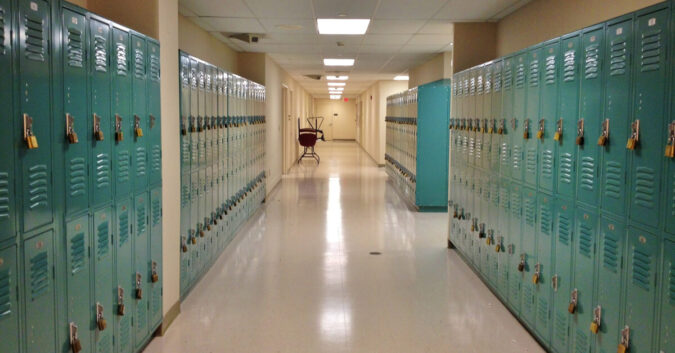Yet another Philadelphia school has been closed due to fears of asbestos contamination. Hopkinson Elementary, a K-8 school with more than 850 students, closed its doors Monday, becoming the seventh school in Philadelphia to shut down within the past year because of possible asbestos damage and exposure.
Work crews had been performing remediation efforts, seeking to address “imminent hazards” posed by the aging building. While the work was being done in areas that were sealed off from public access and only while students were not present in the building, the extent of the hazard has forced district officials to close the school for at least 2 days.
The Philadelphia Inquirer reported officials found some 55 different sites of asbestos damage, mostly above ceiling tiles. Asbestos is lethal. When inhaled or ingested, asbestos fibers can eventually cause fatal diseases like mesothelioma, asbestosis, and lung cancer.
Abatement: Done ‘By the Book?’
While the recent abatement procedures at Hopkinson Elementary appear to have gone “by the book,” officials learned that all of the dusty ceiling tiles had been replaced last summer. According to reports, that project was not performed according to any abatement-procedure protocols.
One teacher told staff from the Philadelphia Federation of Teachers (PFT) that dust had been everywhere, including in many classrooms. Jerry Roseman, the PFT’s director of environmental health and safety, told the Inquirer:
“That situation cannot be considered safe. The degree of danger may be unclear. We don’t know how much danger there is, but we know it’s not safe.”
The president of the PFT, Jerry Jordan, expressed even greater alarm, noting a “potentially severe asbestos exposure” at the elementary school. Officials made the decision to close Hopkinson Elementary on Sunday night for at least 2 days, adding that they are not yet certain when the building will be safe to enter again.
With so many other recent asbestos-related school closings in Philadelphia, many former students are beginning to worry about whether they may have been exposed while in attendance. The latency period for asbestos-related disease can be 20-50 years, so the true extent of Philadelphia’s asbestos problems cannot be determined through current diagnostic data.
Natan Yakov, a college student who attended Philadelphia public schools, told the Daily Pennsylvanian that the escalating situation does not surprise him, adding that asbestos damage has likely been widespread for years. Yakov said:
“And honestly, asbestos is a serious matter, but I wouldn’t be surprised — if the school district were serious about investigating other types of hazards — that they could go into any school and find hazards of a similar nature.”
Old Buildings, New Dangers
A 2018 investigation by the Philadelphia Inquirer found more than 9,000 environmental problems throughout the entire Philadelphia school district. Some of those hazards included dangerously high levels of asbestos, lead paint, and mold, among other things.
To address the crisis, the board of the Philadelphia School District voted last month to spend at least $14 Million to address looming environmental hazards over the next few years. But not everyone is confident the problem can be fixed by throwing money at it.
One school board member told the Inquirer that there are “almost daily indicators” that the system itself is flawed:
“It’s not okay that the community is simply left to trust the process,” Mallory Fix Lopez said.
Public schools in the U.S. are especially prone to asbestos hazards. More than 50% of all public schools in the U.S. were built before 1980, and buildings are far more likely to contain asbestos if they were constructed before then. In Philadelphia, some 90% of public schools were built before 1978.
Because older buildings require more frequent repairs, the risk of agitating old asbestos-containing materials increases drastically with age. This is why teachers suffer a disproportionately high rate of mesothelioma and other asbestos-related diseases — alongside U.S. veterans, construction workers, shipbuilders, and others who worked in high-risk occupations.
